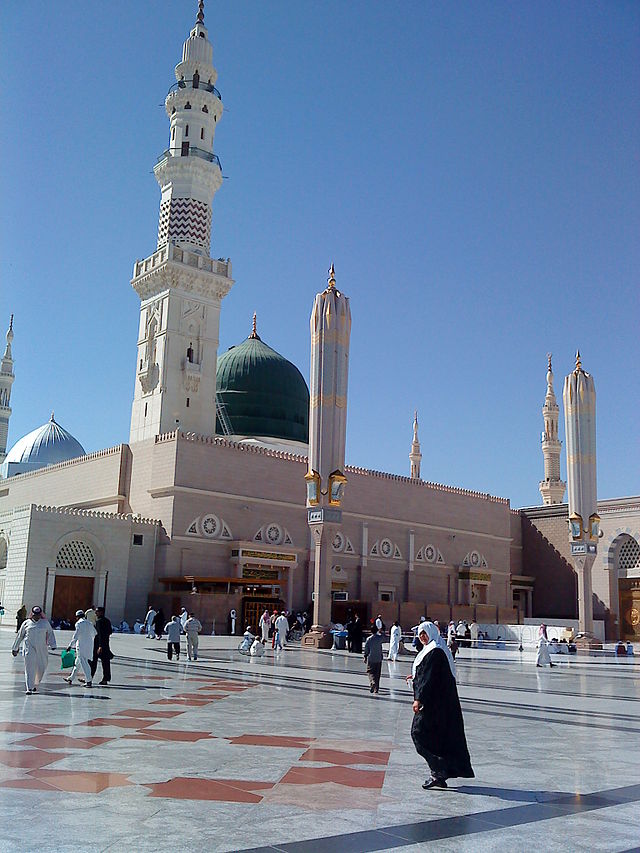Zaotor,zeca and others
Who do you think was buried in the tomb of Prophet of Islam / Muhammad in Medina ? I think there's a consensus in Islam that's where he was buried. And what about the companions and 4 caliphs who were buried in Medina,Iraq,Egypt and other places?
there is/there was NO tomb of Prophet of Islam in Medina., but it is possible that there were
many TOMBS OF MUHAMMADS at that place .

The Green Dome at the
alleged Prophet's Mosque
The Green Dome (Arabic: القبة الخضراء) is a green-coloured dome built above the tomb of the Islamic prophet Muhammad and early Muslim leaders, Abu Bakr and Umar. The dome is located in the south-east corner of Al-Masjid al-Nabawi (Mosque of the Prophet) in Medina.
The structure dates back to 1279 AD, when an unpainted wooden cupola was built over the tomb. It was later rebuilt and painted using different colours twice in the late 15th century and once in 1817. The dome was first painted green in 1837, and hence became known as the Green Dome
all that green pained dome is nothing to do with ORIGINAL PROPHET OF ISLAM..
Abu Bakhra: Abdullah ibn Abi Qhuhafah (Arabic: عبد الله بن أبي قحافة, translit.: ʿAbd Allāh ibn Abī Quḥāfah), c. 573 CE – 23 August 634 CE, popularly known by his nickname Abu Bakr (Arabic: أبو بكر), was a senior companion (Sahabi) and the father-in-law of the Islamic prophet Muhammad. He ruled over the Rashidun Caliphate from 632 to 634 CE, when he became the first Muslim Caliph following Muhammad's death..
Visiting Caliphs tombs
In front of the sacred tomb of Allah’s apostle (peace and blessings of Allah be upon him), there are three sections of brass screens and all three have holes in them. If you stand in front of the middle section between the pillars, you'll see a big round hole on your left side. This is in front of the face of the Holy Prophet. Adjacent to it is a door that stays closed. Right after it on the right side is a round hole which is in front of the face of Hadrat Abu Bakr Siddique. On the right of it, there is another round hole which is in front of the face of Hadrat Umar.
In front of the sacred tomb of Allah’s apostle (peace and blessings of Allah be upon him), there are three sections of brass screens and all three have holes in them. If you stand in front of the middle section between the pillars, you'll see a big round hole on your left side. This is in front of the face of the Holy Prophet. Adjacent to it is a door that stays closed. Right after it on the right side is a round hole which is in front of the face of Hadrat Abu Bakr Siddique. On the right of it, there is another round hole which is in front of the face of Hadrat Umar.
So now dear Skywalker..
it is for you to search for the tomb of Ali... .. Tomb of Caliph Ali ibn Abi Talib ..